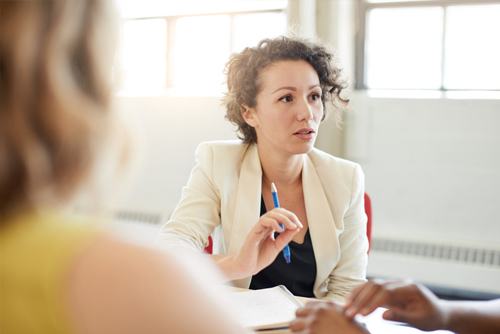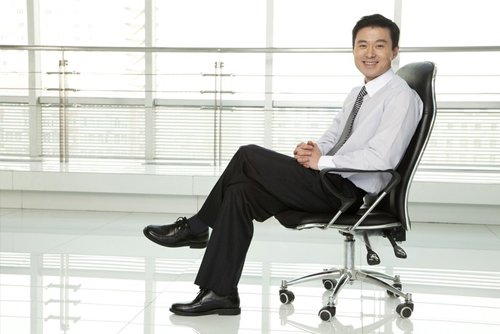Your shopping cart is currently empty.
Body Language For Your Consultant Interview

Never underestimate the importance of body language in your consultant interview and try to make sure you're not sending mixed messages by confusing what you are saying with how you appear to the panel through your body language on the day. A consultant interview is as much a test of confidence and maturity as it is a test of content and your body language is crucial in ensuring you come across well.
We offer more in-depth guidance on how to succeed in your consultant interview, including the use of appropriate body language, on our popular consultant interview course, but if you are unable to attend our course, here is some practical advice on effective body language for your consultant interview:
Enter With Confidence
The interview will begin the moment you step into the room. You should walk in tall and smile confidently at the people in the panel before you. A smile will not only give you an air of confidence, but it will help you look as though you're really happy to be there. The decision on whether to shake hands or not is always a tricky one as some people prefer not to. You will need to gauge whether or not this will happen within a few seconds of entering the room, so just in case you are offered a hand to shake, make sure you keep your hand free. Your handshake should be strong and firm, not limp and weak. Don't be afraid to practice shaking hands before your interview.

Maintain Eye Contact With The Person Who Is Talking To You

At your consultant interview you will face between 2 and 8 interviewers. In some regions/trusts, you may have up to 14 people on a panel (not uncommon in Northern Ireland and Scotland). It is impossible to look at everyone all the time and if you did you would soon get dizzy! Conversely, it is important to try to involve everyone whenever possible to avoid having a situation where the panel member at the end of the table has to wait 45 minutes before you look at them. So, look principally at whoever is asking you the question and, occasionally, look around to ensure you connect with the other members of the panel.
Be An Active Listener
You can achieve this through maintaining good eye contact with the interviewer and reinforcing this with examples of active listening body language, such as leaning forward, nodding and smiling when appropriate. This will help you look more interested in what they are saying and it will also help you to pay attention to them and stay focused. Watch out for any non-verbal cues from the interviewer while you're talking. He or she should be mimicking your own body language, nodding, smiling and acknowledging what you are saying. If they start fidgeting, looking away, doodling on a piece of paper or looking at their watch, then you have lost their attention and you need to work quickly to retrieve the situation.

Put Your Hands On The Table

Most of the panel members will have their hands on the table, taking notes and being attentive. It is crucial that you place yourself at the same level as the panel by also having your hands on the table. If you don't, the table will act as a barrier between you and them and you are more likely to end up looking like a schoolboy/girl waiting to be interrogated. If you are worried about fidgeting, slightly interlock your fingers to stop yourself from moving your hands too much.
Do Not Place Your Elbows On The Table
Elbows on the table not only are rude/familiar, they also make you invade the buffer zone between you and the panel, with the risk that you might come across as threatening. Leave your elbows slightly outside of the table. This is typically achieved by sitting approximately 20 cms from the table.

Move Your Hands If You Want But Only In Front Of You

No need for Shirley Bassey impressions. Arm movement outside of the area in front of you will take the attention away from your face. To ensure that the attention remains on you and not on your hands, do not go left or right of your body and do not move your hands above chest level in order to avoid obscuring your chin or face.
Dress Conservatively
The interview is a business meeting. You must wear a suit, preferably of a dark colour (navy/black for men, and dark colour for women). Wear a lighter shirt/blouse/top so that it frames your face. Don't forget: they want to look at you, not your clothes! Most colours are fine, though men should avoid wearing pink (tie or shirt) because this colour is associated with mediation and team playing which does not convey a strong sense of leadership. As such, though it would be suitable if you were going to a meeting to resolve a conflict, it is less suitable for an interview setting.

Avoid Anything That Can Take The Eye Away From Your Face

This would include any big items of jewellery (small is okay), as well as items such as poppies, red/pink ribbons, daffodils.
Crossing Your Legs
If there is no table you may cross your legs but with the crossed leg always facing in the direction of the person who is talking to you. This will enable you to turn your body towards them whilst at the same time being able to rotate to engage with the other panel members.

Leave A Lasting Impression
No matter how you're feeling you should try to finish confidently with a bang and not a whimper. Shake hands, if appropriate, and thank the panel for the opportunity, then walk purposefully towards the door with your head held high.

Consultant interview coming up?
Our consultant interview courses prepare you for all aspects of the consultant interview, including the use of appropriate body language
